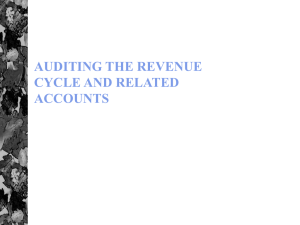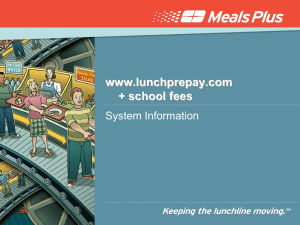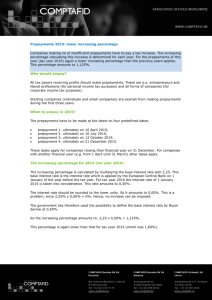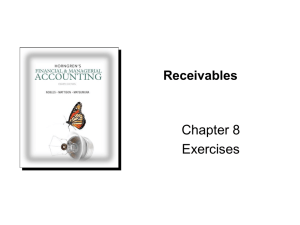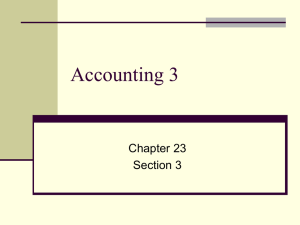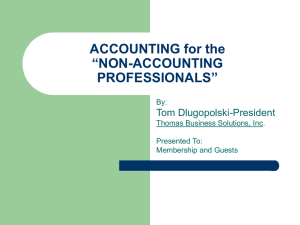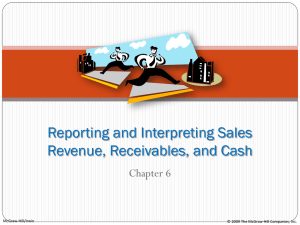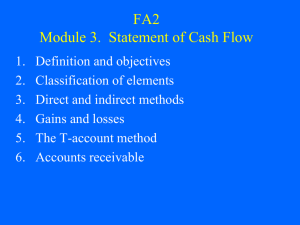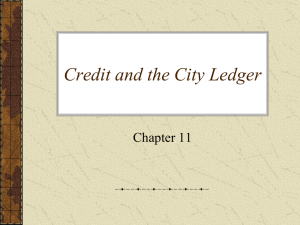Substantive tests
advertisement
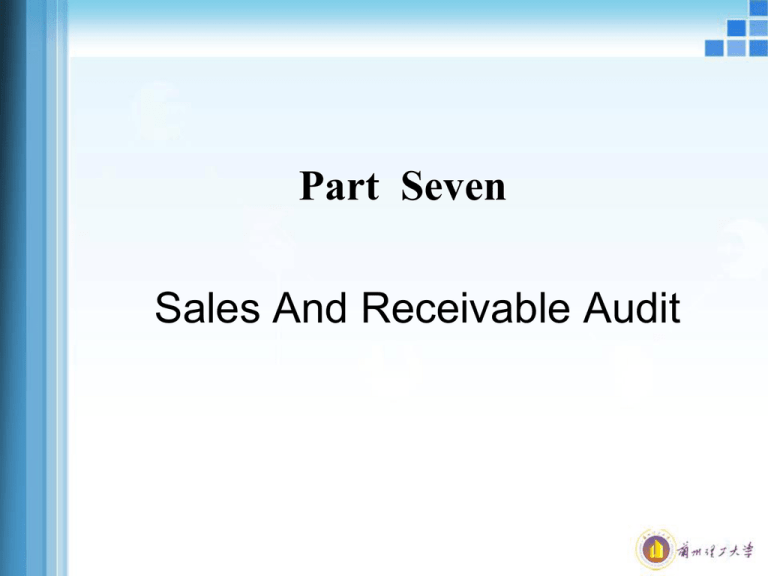
Part Seven Sales And Receivable Audit Structure of Seminar • • • • 1. Control objective and Control procedures 2. Tests of control 3. Substantive tests 4. Trade Receivable and prepayments 1. Control objective and Control procedures 2. Tests of control • Sequence test check on invoice, credit note ,dispatch notes, and orders, ensure no omission and duplicated • Check the authorization for acceptance of order, dispatch of goods, raising of the invoice and credit note, pricing and discount, write off of bad debt • Seek evidence of checking arithmetical accuracy Tests of control • Check dispatch note and goods returned note to ensure they are referenced to sales invoices and credit note and vice versa • Check the control account reconciliation has been applied. • Tests of control are designed to ensure that controls within a given system exist and have been operating effectively throughout the period. 3. Substantive tests • Substantive tests are designed to identify material misstatements. Substantive tests in respect of sales focus primarily on whether or not sales have been understated as a result of: • Dispatches not being invoiced • Invoices not being recorded • Inaccurate invoices Substantive tests • The main tests are as follows: • 1) Analytical review • Compare levels of sales throughout the year on a month by month basis • Compare the sales in the last month of the year to sales in the first month of the next year • Financial and non-financial information to confirm the sales level • Substantive tests • • • • • • Compare with receivable days ratio Compare of ageing debts to prior years 2) Accounting records Check and cross-cast of sales day book Check invoice are posted to ledger account and control account Check SDB—invoice—credit note—dispatch note Substantive tests • • • • • Obtain a list of receivables balances in receivable ledger account agree the total with the control account Test year end control account reconciliation 3) Invoice and credit notes Check numerical sequence Check sales invoice to SDB and receivable ledger account Substantive tests • Compare invoiced price with authorized • Check calculations of invoices • Scrutinize credit note for large and unusual items • 4) Bad debts • Previous experiences • Evidence from confirmation of account receivable • Aged analysis of receivables Substantive tests • Post balance sheet events • 5) Cut-off testing • 6) Receivables 4. Trade Receivable and prepayments • Risk • There is a risk that debtors will be misstated because: • Not recoverable and the provision for bad and doubtful debts is inadequate • Fraud has occurred e.g. teeming and lading, where receipts are posted to the wrong sales ledger accounts to hide funds that have been misappropriated. Trade Receivable and prepayments • 1) Debtors’ circularization • Involves sending letters to a sample of debtors asking them to confirm their balance at the year-end. • Provides third party, documentary evidence of existence and rights and obligations Trade Receivable and prepayments • Circularization methods • Positive This is the most common method. Customers are asked to reply directly to the auditors either agreeing with the balance shown in the letter, or disagreeing and stating the balance per their records. • Negative • Customers are asked to reply only if they disagree with the balance shown. This method is Trade Receivable and prepayments • • • • • appropriate if the client has good internal control and there are a large number of small value accounts. It is however rarely used in practice. Procedure Letters and replies Preferably sent out after the year end (otherwise additional procedures required) On the company's letterhead and signed by the client Enclose a copy of the customer's year end statement Trade Receivable and prepayments • • • • • • • • • • Letters posted by the auditor. All replies should be sent directly to the auditor in a prepaid envelope. Sample Material balances Old unpaid accounts Accounts Written-off during the period under review With credit balances Settled by round sum payments With nil balances Trade Receivable and prepayments • Follow up: failure to respond • Positive circularization only • Send a second letter within 2 weeks • Fax a copy of the letter to the customer • Contact the customer by telephone • Ask a responsible official independent of the sales ledger department, to investigate • Adopt alternative procedures • Follow up: disagreements Trade Receivable and prepayments • Positive and negative circularization • Dispute • identify reason • consider need for provision • cut off problems (invoices or cash receipts) • Extend cut off testing? • receipts posted to wrong account • Evidence of other miss posting? • Trade Receivable and prepayments • customers who are also suppliers netting off balances • Allowed? • Teeming and lading • detailed testing of cash receipts if suspected • Alternative procedure • check cash after date • agree to specific • verify valid sales orders end delivery notes Trade Receivable and prepayments • All disagreements and non-replies must be followed up and their effect on total debtors evaluated. Trade Receivable and prepayments • 2) Bad and doubtful debts • Provides assurance in respect of ap • propriate carrying value. • Procedures: Stage 1: Identify doubtful debts • Check the aging on the aged debtors report • Discuss with the directors all balances —over 60 to 90 days old —with round sum payments Trade Receivable and prepayments • • • • • —the credit controller identifies as being doubtful Review correspondence from customers lawyers debt collection agencies Examine credit notes issued after the year end. Trade Receivable and prepayments • Stage2: Review provisions • Specific provisions — necessary? — adequate? • General provisions — calculation correct — consistent with prior years — compare prior year provision to actual bad debts incurred Trade Receivable and prepayments • 3) Cut off testing • For a sample of pre year end GDN agree • excluded from inventory records • invoices in sales & debtors • For a sample of post year end GDN agree • included in inventory records — invoices not in sales or debtors Trade Receivable and prepayments • Sample of pre year end goods returns notes agree • included in inventory—records • credit notes in returns & debtors • Sample of post year end goods returns notes agree • excluded from inventory records — credit notes not in returns or debtors
